It’s no secret that we really love whales. Here are just some moments over the past 50 years of Greenpeace fighting to protect the gentle giants of the ocean.
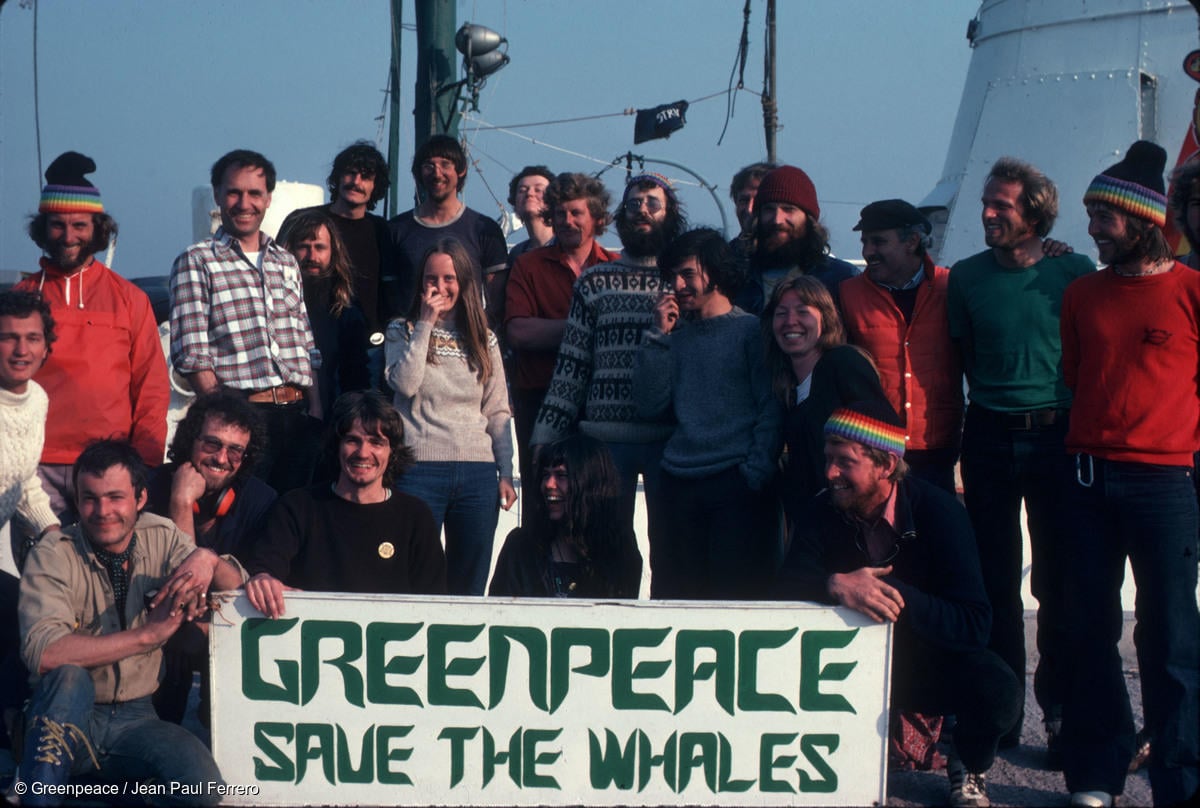
From toothed whales such as orcas to the largest living animal on our planet, the blue whale. It’s no secret that we just really love whales.
To help celebrate World Whale Day, here are just some moments over the past 50 years of Greenpeace fighting to protect the gentle giants of the sea.
1. Greenpeace’s first anti-whaling campaign
In the summer of 1975, Greenpeace set sail on its first anti-whaling campaign in the North Pacific Ocean.
Here the brave crew confronted the activities of the Soviet whaling fleet onboard Grenepeace’s first vessel, the Phyllis Cormack.
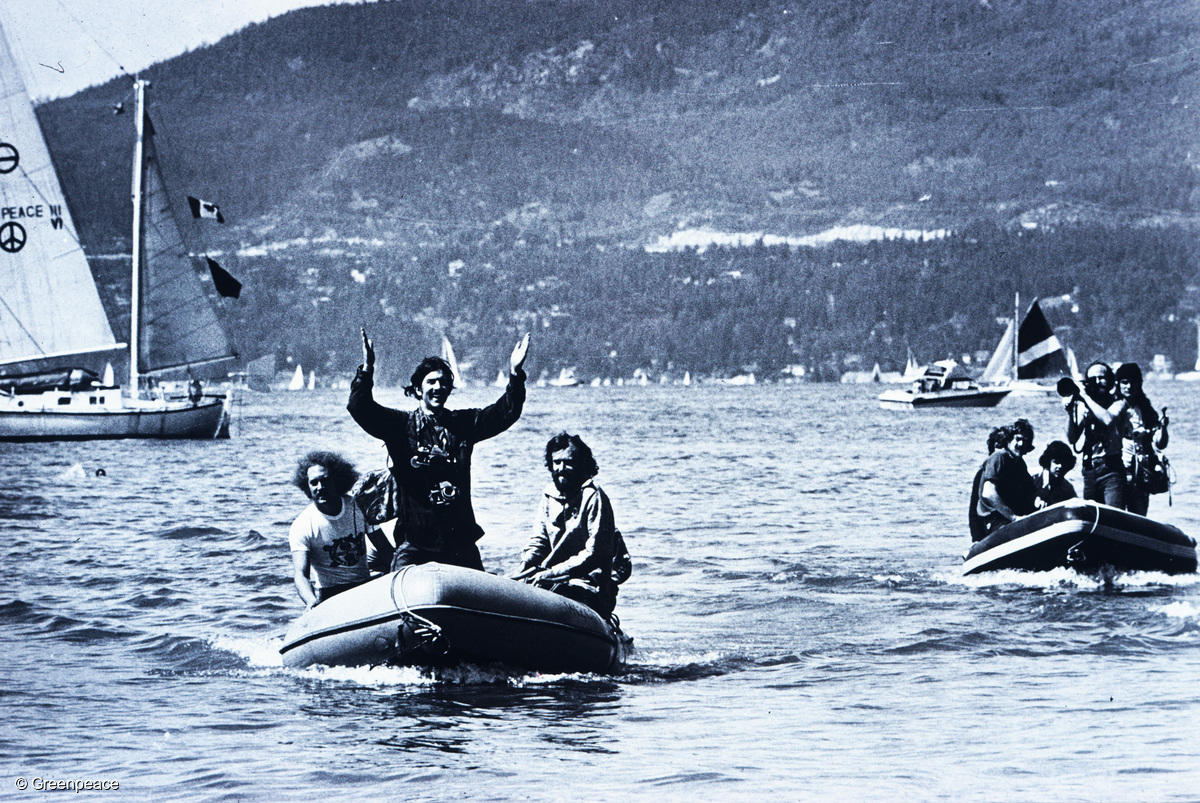
2. Helping to establish a moratorium on commercial whaling
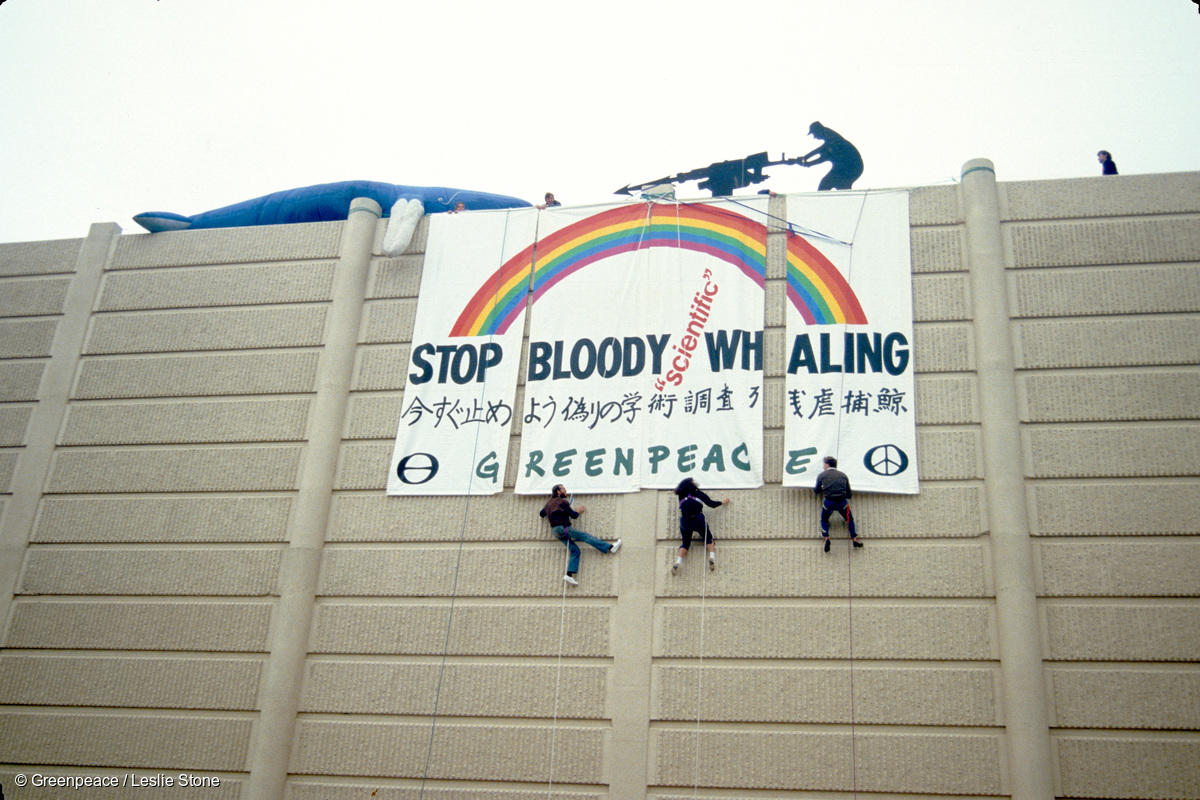
Throughout the 1970’s, Greenpeace continued to shine a spotlight on the whaling industry in a way that the world had never seen before.
And after a decade of committed campaigning to ‘Save the Whales’, the International Whaling Commission (IWC) voted on a moratorium on commercial whaling in 1982 – marking the virtual end of large-scale whaling around the world.
3. Taking action against seismic testing
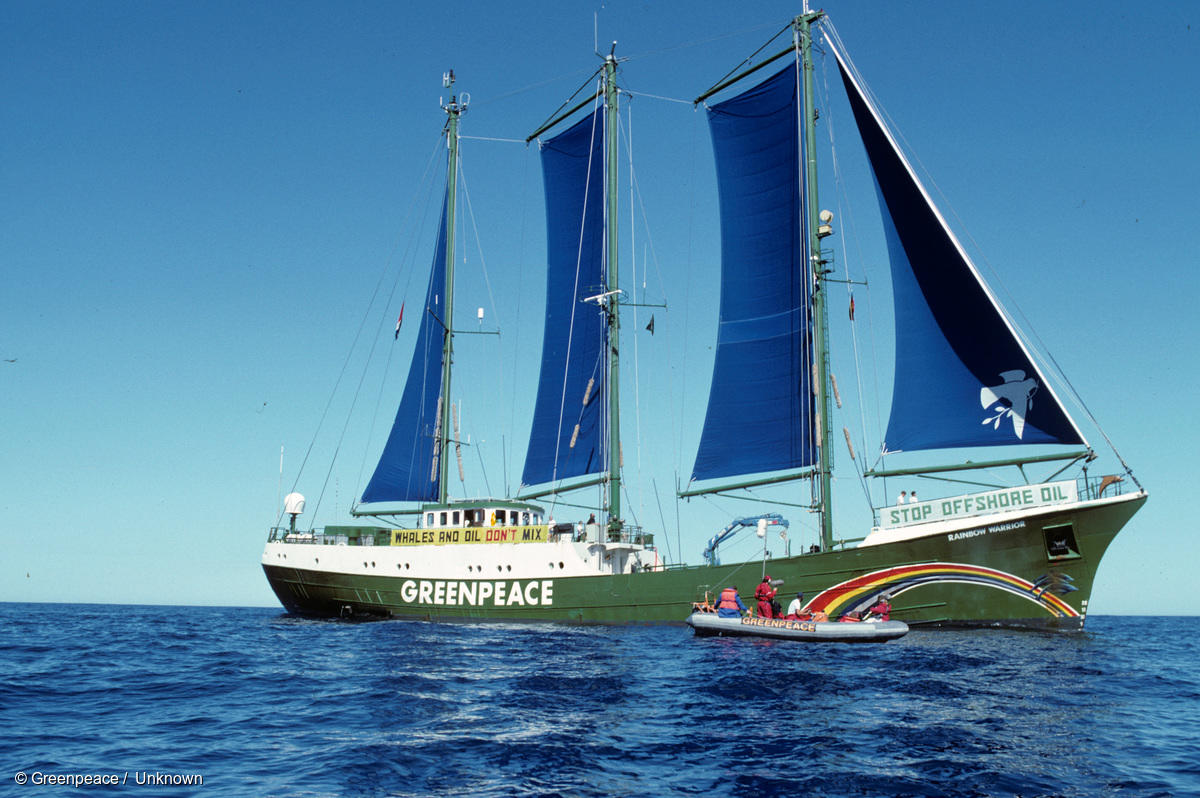
Unfortunately, Woodside Energy’s current deep-sea gas proposal on the Burrup Hub is not the first time Greenpeace has helped fight off seismic testing in Australian waters.
In 1991, the Rainbow Warrior confronted fossil fuel giant BHP Biliton’s ship, WESTERN ODYSSEY, which was seismic testing for offshore oil at the time.
4. And against destructive fishing methods
In 1998, Greenpeace activists joined 35 Greenteam children onboard their school ship on the River Danube, Vienna, to protest against harmful drift nets.
The Greenteam joined activists in tying paper models of different kinds of bycatch, including dolphins, whales and turtles.
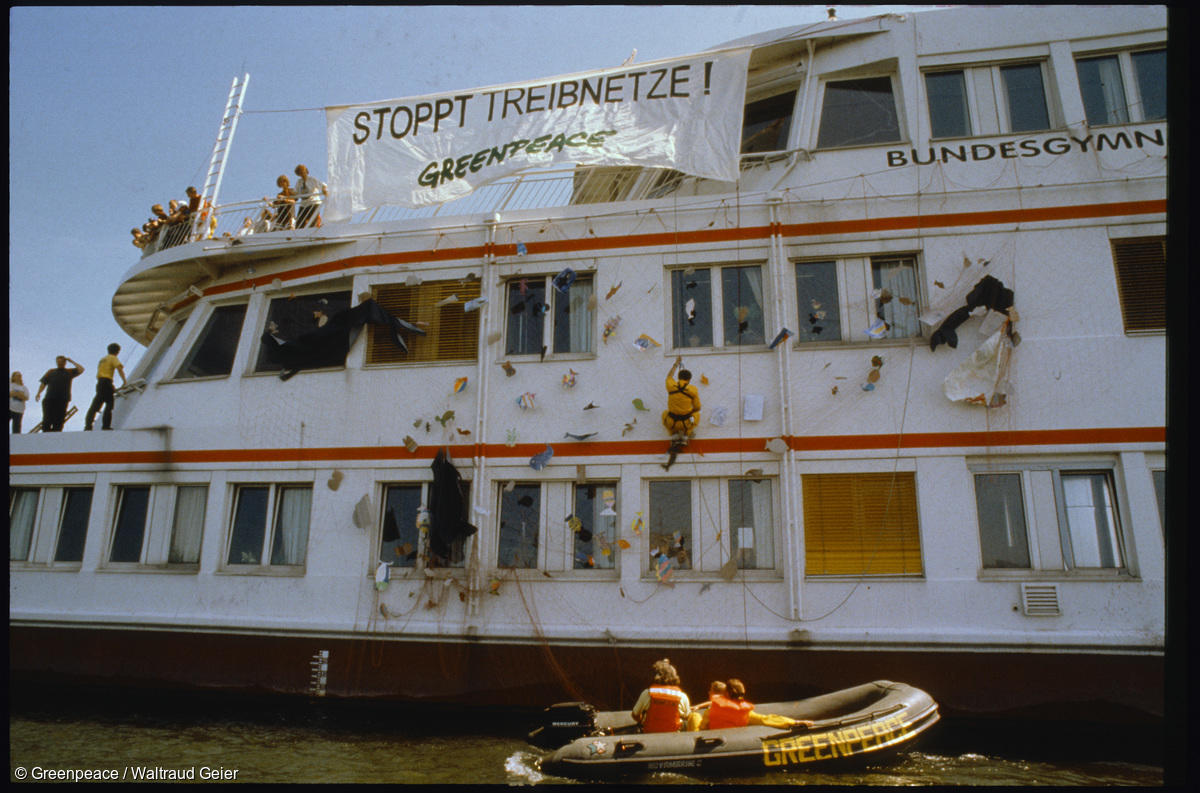
5. Defending the Southern Ocean’s whale sanctuary
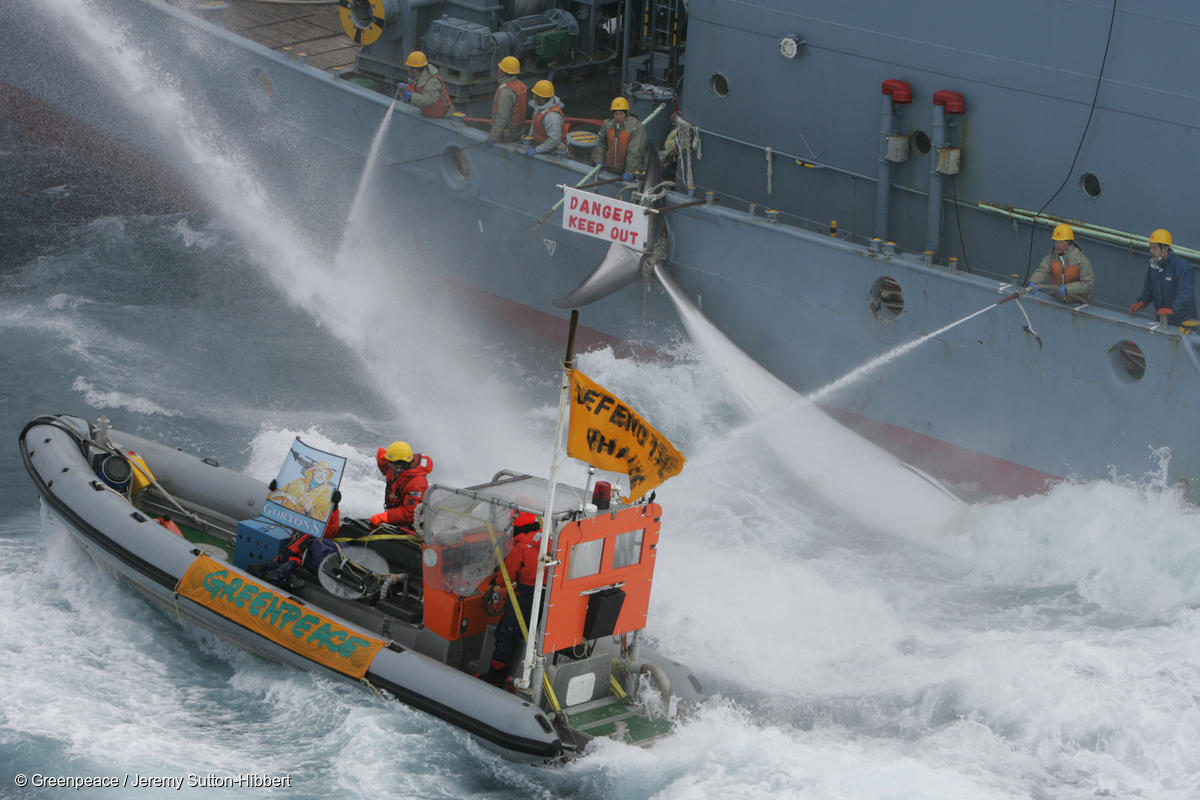
By 2005, Greenpeace continued to document the undermining of the moratorium on commercial whaling, and the Southern Ocean’s whale sanctuary which was established in 1994.
During the Southern Ocean Tour, Greenpeace ship MY Esperanza fought to expose the continued involvement of companies in the whaling industry.
6. People vs. Oil in the Great Australian Bight
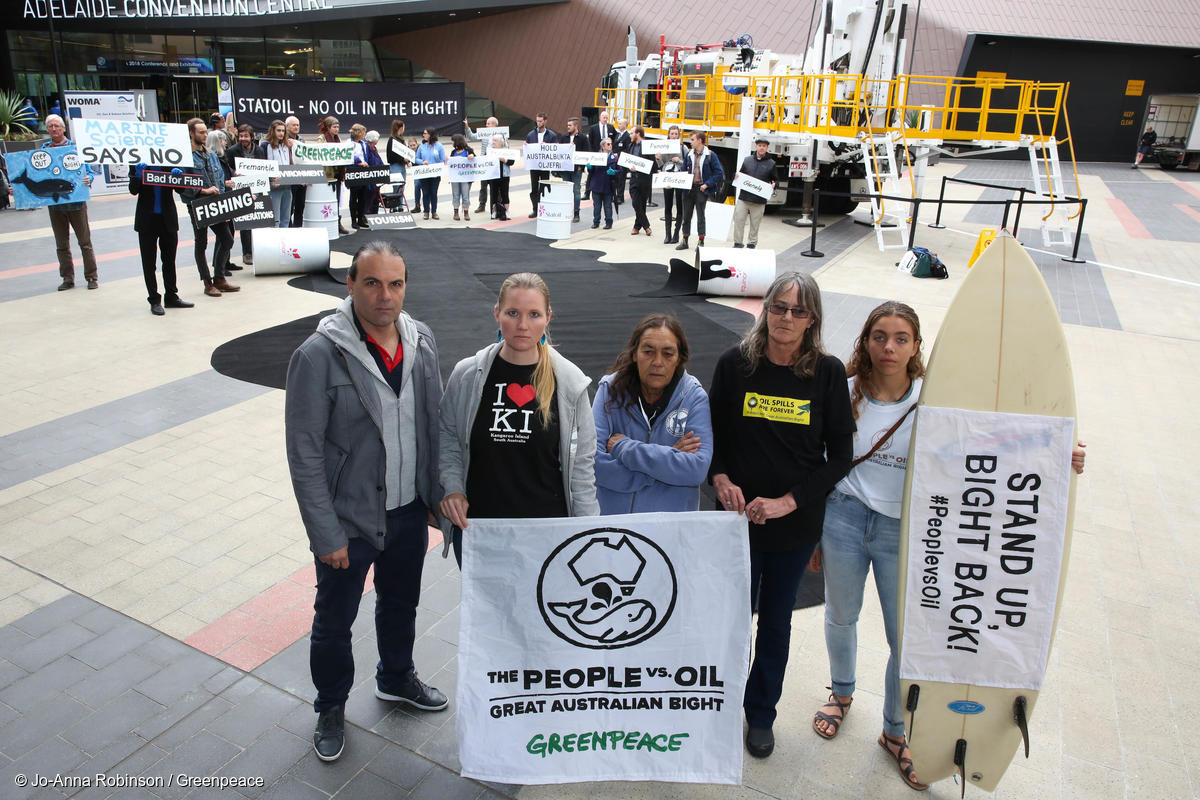
In 2020, Norwegian oil giant Statoil-Equinor pulled the plug on its plans to drill for oil in the fragile Great Australian Bight, one of the most important whale sanctuaries on Earth.
This historic win was thanks to relentless campaigning by coastal communities, Indigenous traditional owners, NGOs, surfers, the seafood industry, tourism operators, and other local businesses.
…Hooray for people power!
7. Fighting for a Global Plastics Treaty
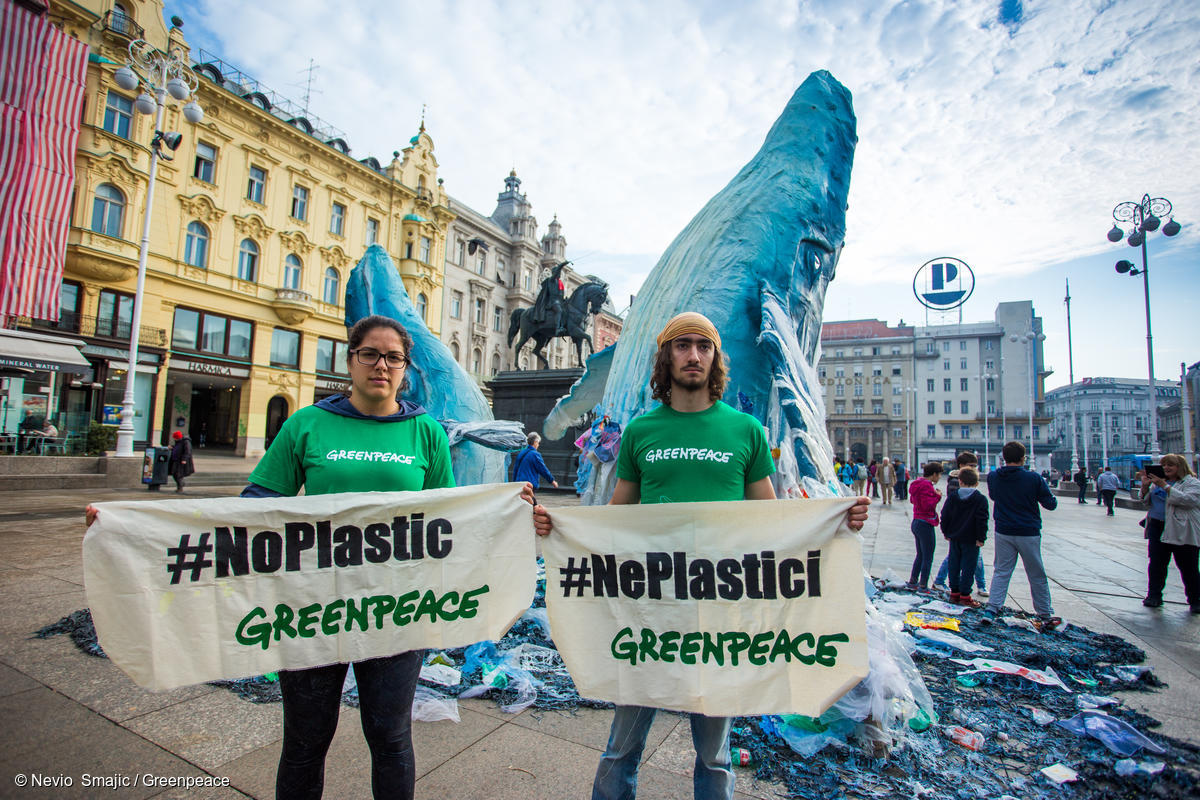
We know that plastic is wreaking havoc in our oceans – and unfortunately that means for whales too.
That’s why Greenpeace has been actively involved in making sure our precious marine life has a voice when it comes to plastic waste.
Greenpeace is currently campaigning for a legally-binding Global Plastics Treaty, which would limit plastic production and use for our human rights, our biodiversity, and our climate.
8. AND a Global Oceans Treaty!
Protecting whales and our oceans go hand-in-hand, that’s why Greenpeace is campaigning for a strong Global Oceans Treaty that would see one-third of the world’s oceans protected from industrial activity by 2030.
This will build resilience against a changing climate, and ensure species (including whales) rebound and flourish into the future.
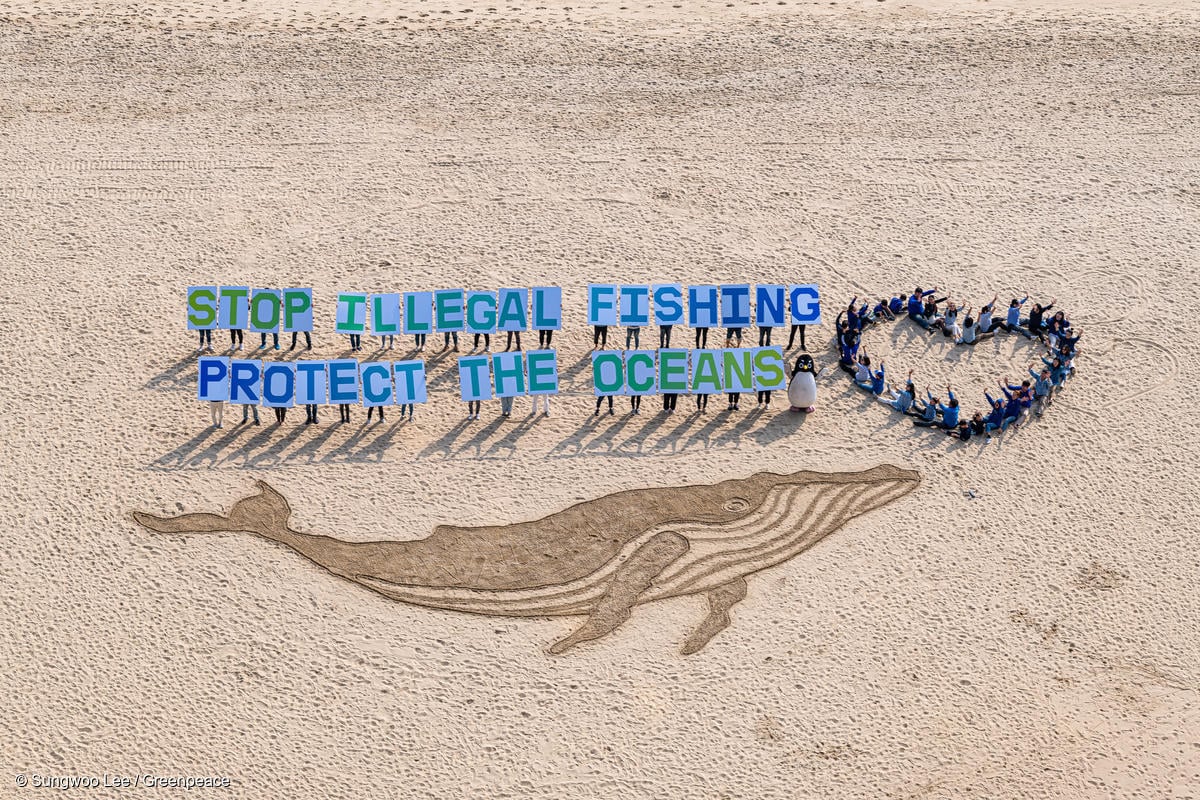
9. Protect the Oceans Research Expedition
Back in 2020, Greenpeace returned to the Antarctic during the last stage of the polar-to-polar Protect The Oceans Expedition.
Teaming up with a group of scientists, Greenpeace helped investigate and document the impacts the climate crisis is already having in this area.
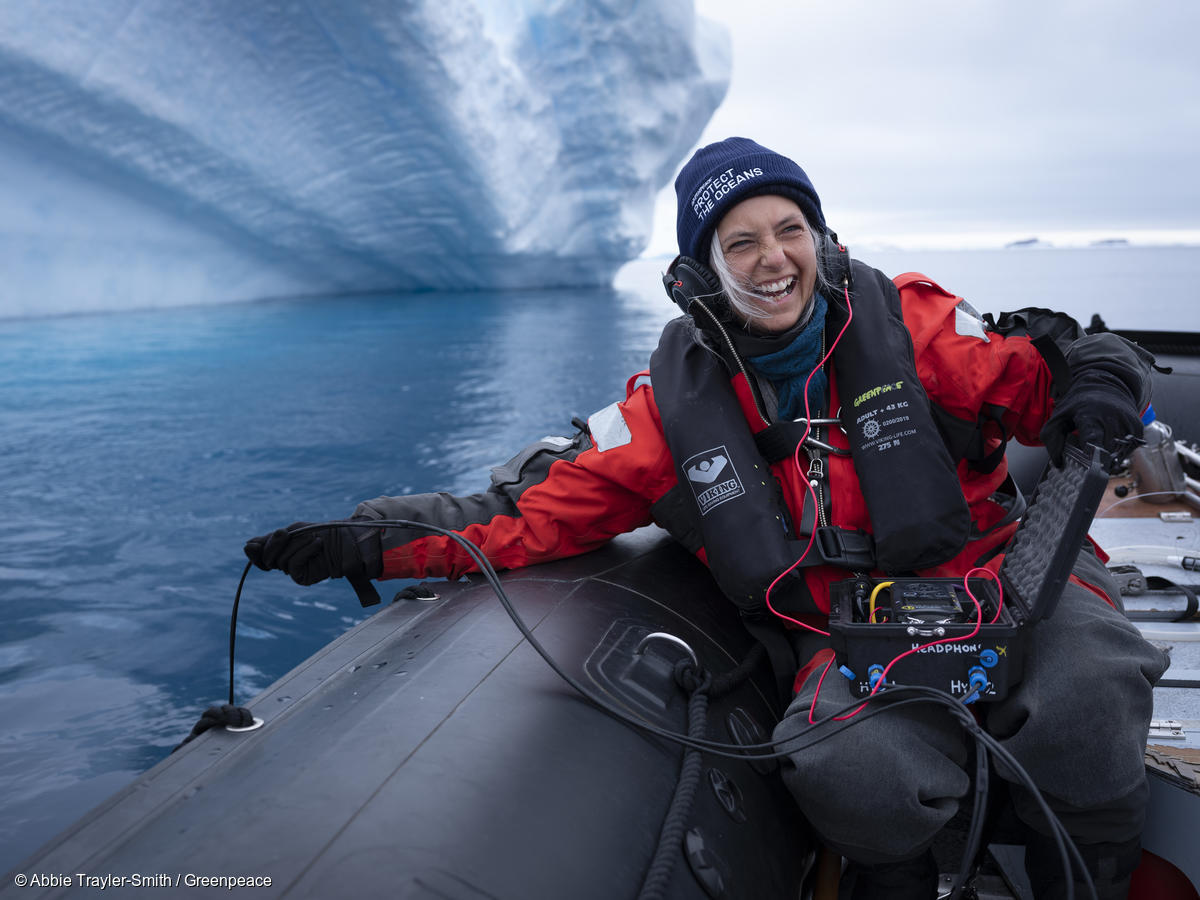
10. Whales not Woodside
Greenpeace is embarking on its next fight to protect whales in Western Australia, where fossil fuel giant Woodside Energy wants to commence seismic blasting as part of its proposed deep-sea gas project in the Burrup Hub.
It’s the most polluting fossil fuel proposal in Australia today. And if completed, Woodside would produce gas until 2070.
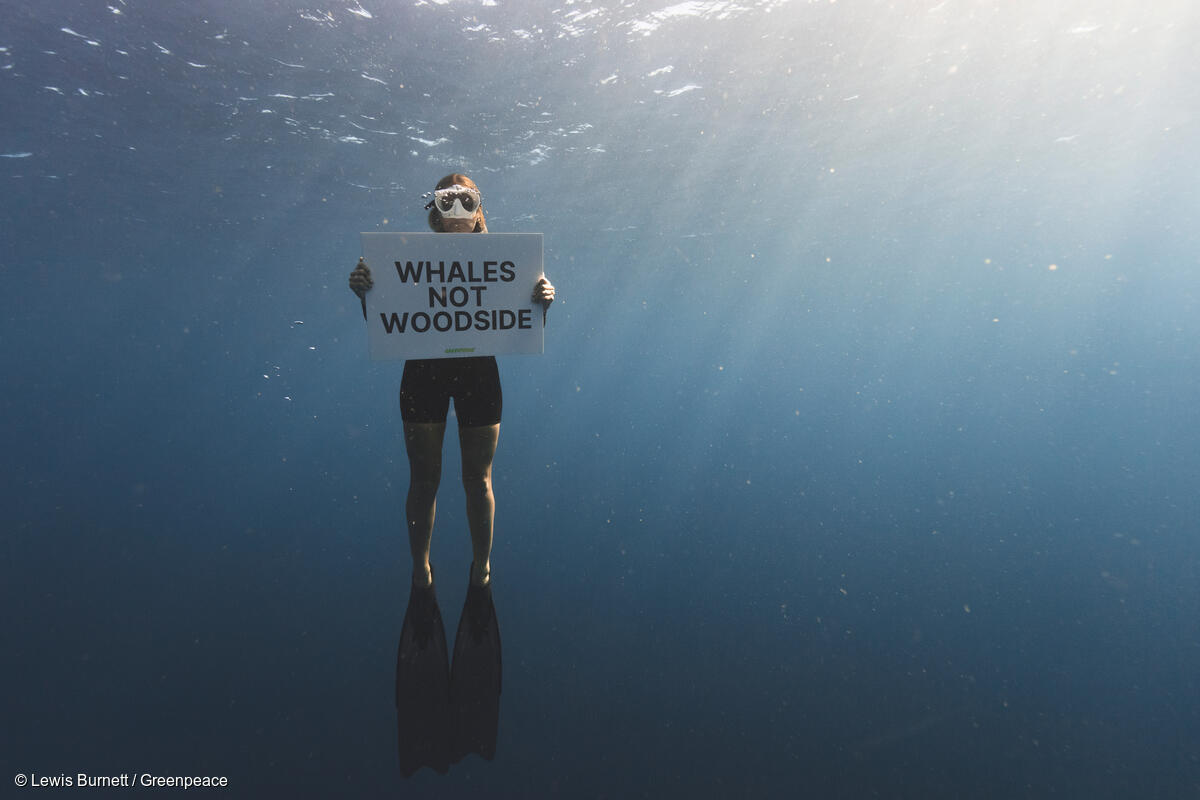
Greenpeace volunteer holds a banner in 1000m deep water in Gascoyne Marine Park, Western Australia in 2022
Get involved in the fight for #WhalesNotWoodside today.
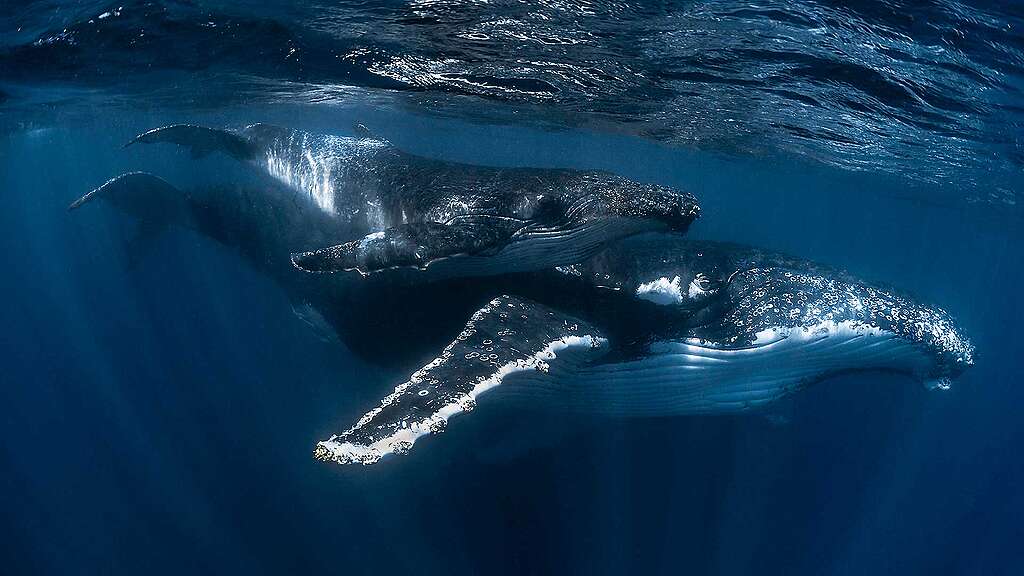
Woodside plans to drill up to 80 gas wells off the coast of WA in some of the world’s most biodiverse waters – including 50 wells around Scott Reef. Pristine coral reefs, pygmy blue whales, endangered turtles and countless other marine life in Western Australia’s oceans are all at risk. We have the tools to stop Woodside. With your power behind us, we will.
Sign petition
